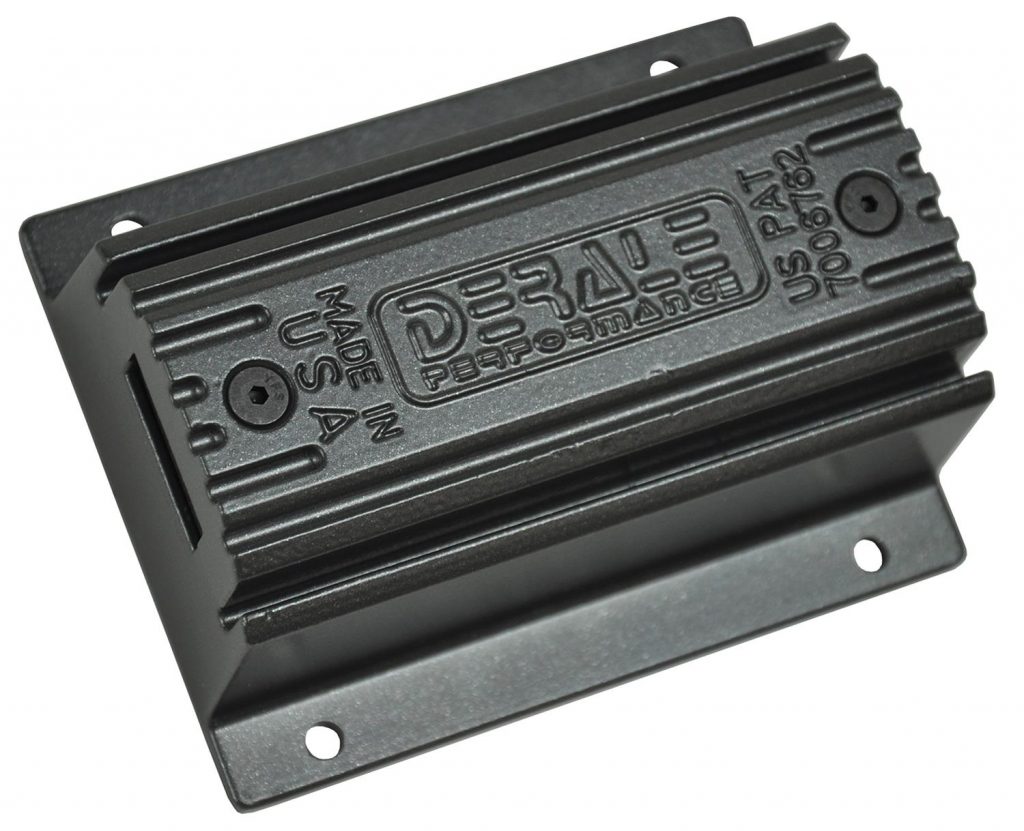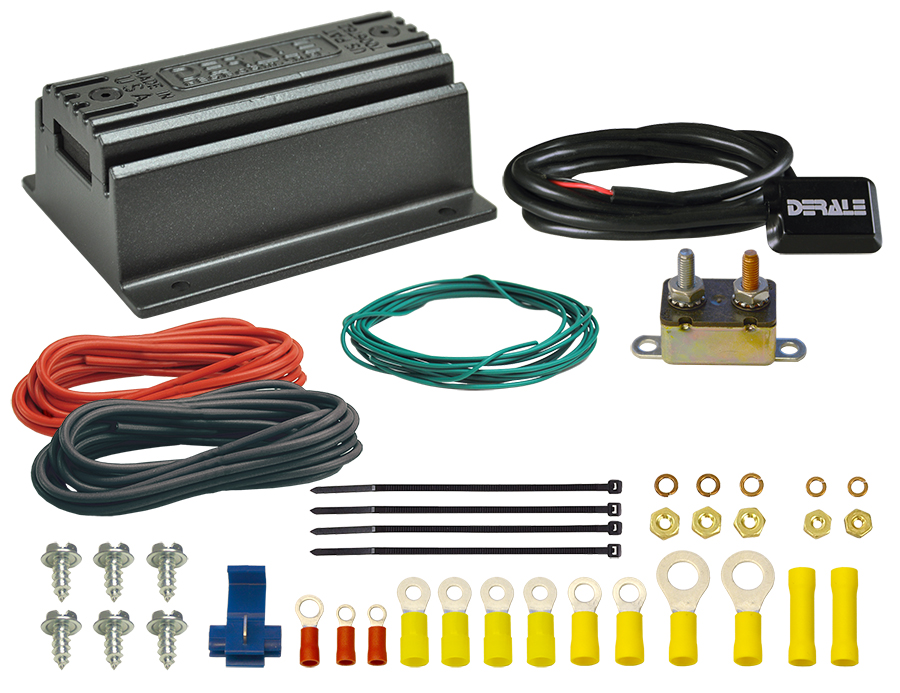
For most vehicles running electric cooling fans, they’re either on or off—without a whole lot of middle ground. When the temperature sensor says the coolant is too hot, the fans turn on. When engine temps fall back below a pre-set threshold, they turn off.
While simple, this setup isn’t the most efficient. It also means your engine temps don’t remain stable, constantly fluctuating above and below your thermostat’s set limit (and you’re constantly listening to your fans click off and on in the process).
That’s what so neat about Derale’s PWM Electric Fan Controller. Thanks to pulse width modulation, the controller regulates power to control fan speed. So instead of just clicking on and off, your fan(s) will speed up/slow down as engine temperatures fluctuate.
Why is that good? Well, it’s efficient for starters, demanding less current draw than a fan that’s constantly cycling on and off. Derale says that, with its PWM controller, fans only need to run at about 50% capacity to maintain engine temperatures. Not only does that reduce power draw, it’ll prevent premature wear and cut down on fan noise too.
Better still, it will mitigate a lot of the current spikes that come with repeated on/off switch cycles, which can protect sensitive vehicle electronics.
You connect the controller to a sensor in the radiator. When it reads that coolant temps are creeping up, it’ll slowly roll-on power to the fan(s) to cool things down and maintain the consistent temperature you’ve set.

And the kit includes Derale’s handy stick-on temperature sensor too, which eliminates a lot of plumbing and adapter matching. See how easy it is to install below:

Comments